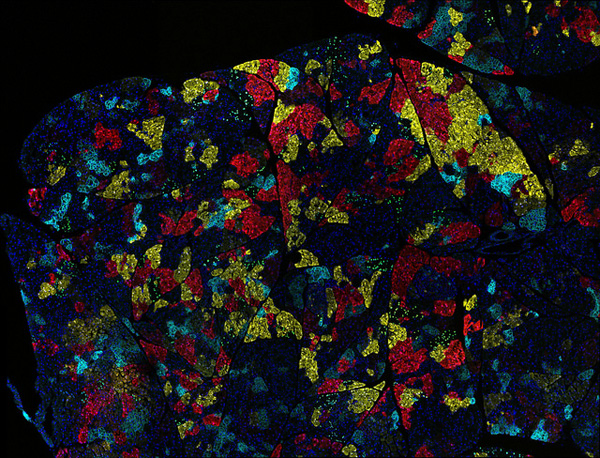
Harvard Medical School investigators at Massachusetts General Hospital have developed new methods for mapping and measuring solid stress within tumors. Their accomplishment may lead to both improved understanding of the forces exerted by solid and elastic components and to novel treatment strategies.
The team, from the Edwin L. Steele Laboratories for Tumor Biology in the Mass General Radiation Oncology Department, reported their findings in the inaugural issue of Nature Biomedical Engineering.
“It has long been known that tissue stiffness is higher than normal in fibrotic tumors—tumors containing significant amounts of collagen and other connective tissues—and that has been linked to several hallmarks of cancer, including tumor growth, invasiveness and metastasis,” said Rakesh Jain, the HMS A. Werk Cook Professor of Radiation Oncology (Tumor Biology) at Mass General and director of the Steele Laboratories.
“Solid stress is different from stiffness,” said Jain, who is corresponding author of the paper. “It is the mechanical force transmitted within fibrotic tumors, and like a compressed spring, it accumulates and is stored as elastic energy within a tumor as it grows.”
Earlier discoveries
Jain’s team discovered the first evidence of solid stress in tumors in 1997 and provided the first measurements in 2012. In numerous studies, they have shown that the compression of blood and lymphatic vessels by solid stress contributes to tumor progression by impairing the supply of oxygen, which reduces the effectiveness of chemotherapy, immunotherapy and radiation treatment.
More recently they found that the application of solid stress to tumors in living animals directly stimulates pathways involved in the initiation and migration of tumors. Strategies to alleviate solid stress by reducing collagen and hyaluronic acid, two primary structural components of the extracellular matrix that carry stress, have led to new approaches to enhancing the results of conventional therapies, which are currently being tested in a Mass General clinical trial.
New frameworks
The Nature Biomedical Engineering paper describes the team’s development of experimental and mathematical frameworks providing two-dimensional mapping of solid stress in tumors; sensitive estimation of the low levels of solid stress within small tumors, such as metastases; and the ability to quantify solid stress in tumors in living animals.
All these methods were based on the concept of cutting the tumor and, as the stresses stored during tissue growth are released, high-resolution measurement of the tissue deformation with ultrasound or optical microscopy.
Using these methods to make measurements in mouse models of both primary and metastatic tumors, as well as in a few human tumor samples, revealed that solid stress and stored elastic energy may be different in primary and metastatic tumors, since they depend on both tumor cells and the surrounding microenvironment.
Tumors with higher elastic energy are not necessarily stiffer, and vice versa; solid stress increases as tumors grow larger, and the normal tissue surrounding a tumor contributes significantly to solid stress.
Clinical trials
“Two drugs are now in clinical trials based on their ability to release the mechanical forces exerted on tumor blood vessels by targeting collagen and hyaluronic acid,” said Jain. “Similar to the methods we previously developed to measure solid stress, these new methods could also be used to measure the results of solid-stress-reducing agents.”
The characterization of solid stress would also be beneficial in treatment of cancer in obese patients, Jain said.
“We recently found that cooperation between fat cells, immune cells and fibroblasts in pancreatic tumors exacerbates the fibrotic microenvironment in obese patients, further promoting blood vessel compression,” he said. “This is probably the most significant consequence of solid stress identified to date, and characterizing the response to agents designed to alleviate solid stress could improve the dismal outcomes of this often-deadly cancer.”
Hadi Nia, HMS research fellow in radiation oncology at Mass General, is lead author of the Nature Biomedical Engineering report.
Support for the study includes National Institutes of Health grants P01-CA080124 and R01-HL128168, National Cancer Institute Outstanding Investigator Award R35-CA197743 and Department of Defense Breast Cancer Research Innovator Award DP2 OD008780. Mass General has filed a patent application based on the methods described in this paper.
Adapted from a Mass General news release.


